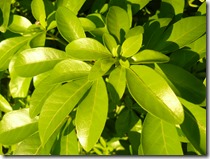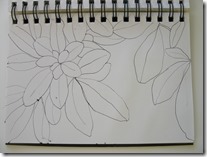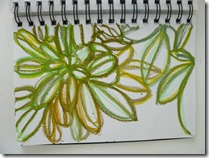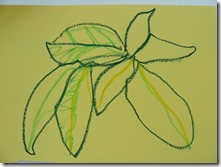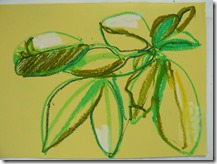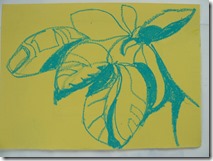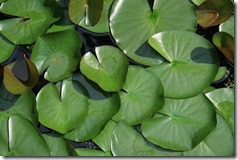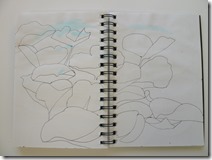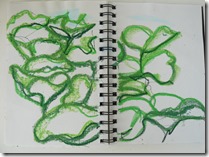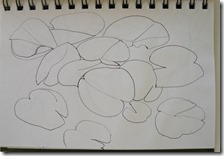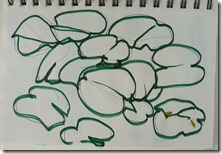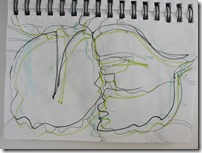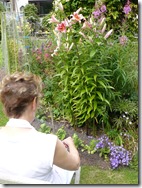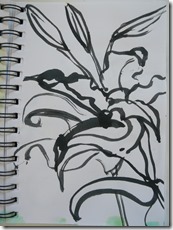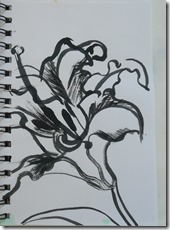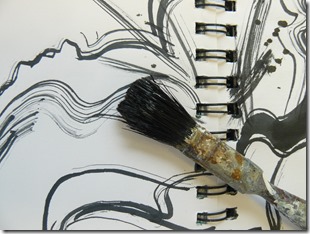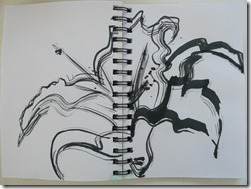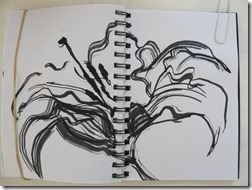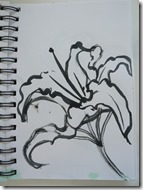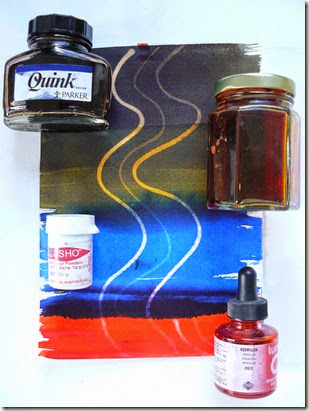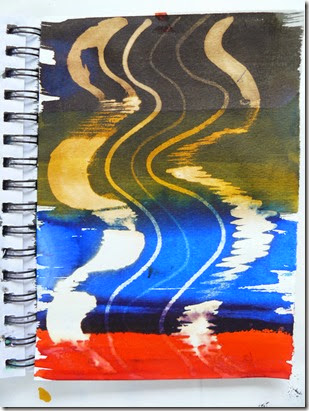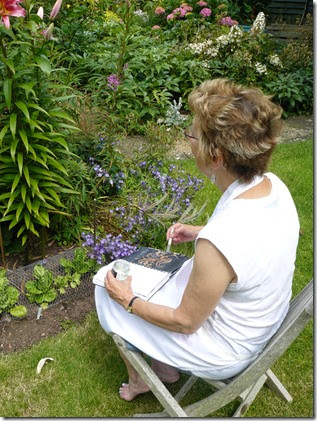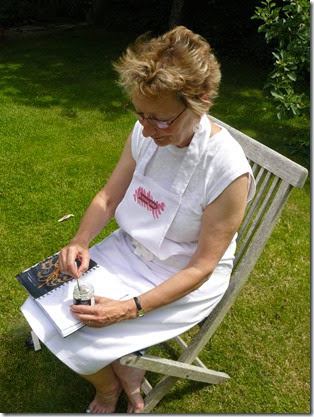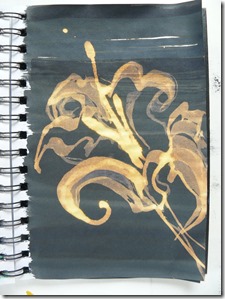This week you are asked to select some of your favourite shapes – just individual shapes - and not the whole drawing of a plant or flower or even some other form that interested you that had large identifiable shapes.
Choose your shapes carefully. They might be a whole leaf or just part of a leaf. They might be the negative space between two leaves. There were so many to choose from – you just have to decide what appeals to you – the important thing is that it should have an interesting silhouette. The images from my drawings in last week’s sketchbook pages have high-lighted the shapes I favoured for this weeks pages.

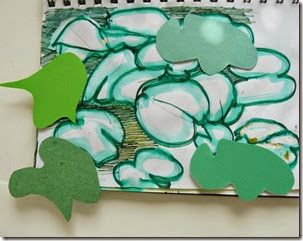
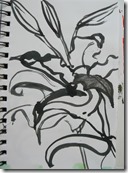

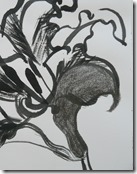
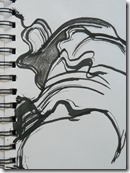
Having found some beautiful shapes, now choose some extra pieces of paper – could be plain white, could be coloured, could be printed, could be recycled, could even be related to the flower or plant.
The next stage is a new one in this series of lessons: it involves drawing with your scissors! If this sounds rather peculiar, look at the work of Matisse, especially his paper cut drawings. He draws with his scissors – and it’s great fun when you get the hang of it.
The quote of Matisse, in this book by Jean-Vincent Sénac, says to “Draw with your scissors. Cut your shape straight out of the colour (paper), without hesitation.”
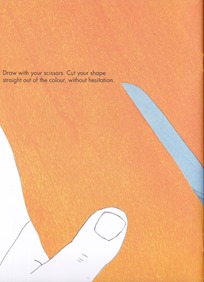


Several copies of my shape were needed to explore different ways of using them in future drawings. I was a little tentative at first as I felt that I should cut my shape as accurately as the one in my drawing, but soon realised that the drawn shape might not be (and probably wasn’t) the ‘correct’ shape anyway. So I formulated a few tips to pass on to you ; (sorry these are a list of ‘don’ts!)
- Don’t be tempted to trace the original shape in your drawing, then re-trace onto the coloured papers. Each traced shape will become less and less interesting as you inevitably skim the curves and points in this process.
- Don’t be tempted to make a template of your shape and use this to draw around on different coloured papers, the shape will gradually deteriorate visually for the same reason as above.
- Don’t be tempted to cut your shape from several layers of paper at the same time. You might feel smart to think of this, but the shapes you produce will likely be ‘poor’ copies.
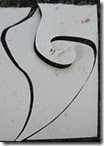
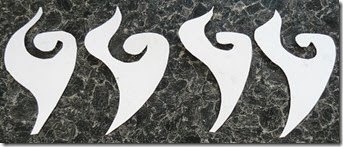
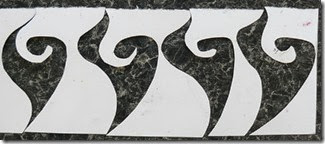

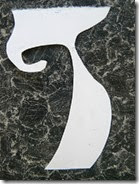
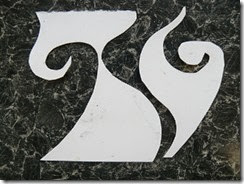
DO cut your shape out of one layer of paper, looking at the original shape more carefully than your scissors (obviously keep your fingers away from the cutting blades!)
DO hold the scissors in the hand you normally use for holding scissors and keep this same arm steady and close to your body.
DO hold the coloured paper in your other hand and use this hand (and arm) to rotate the paper around to make the paper do all the moving so the cutting line is made where you wish it to be. This takes some practice of course, but before long, you’ll find yourself’ drawing’ your cut shapes with control and expertise. Each shape will be slightly different and will probably evolve each time you cut it. You can see the shapes I cut, inspired by the water lily leaves, the negative space between the leaves in the drawing on the yellow paper and the two curvy petal shapes in the bleach and ink drawings at the bottom.
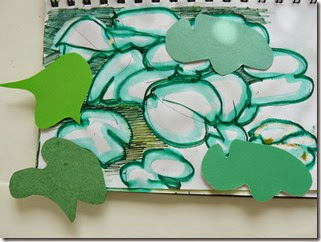
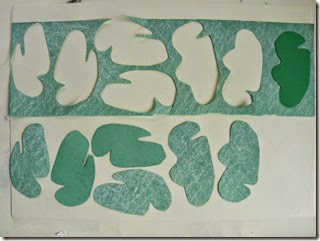
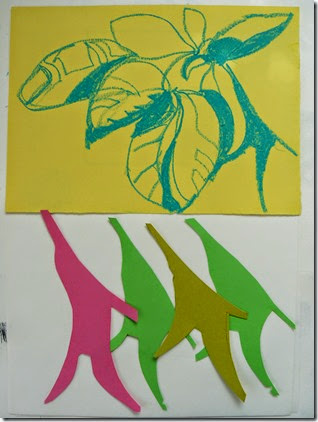
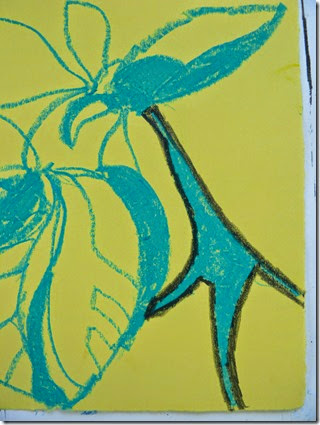
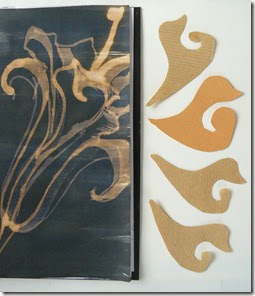
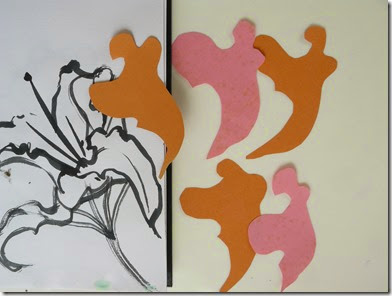
Now to enjoy playing with these shapes!
First try placing them back on to the original drawing – or even onto the reverse side of the page if the ink/bleach shows on the reverse.
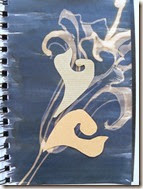
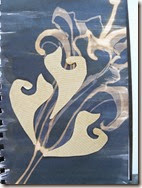
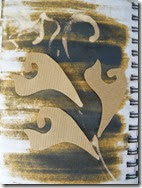
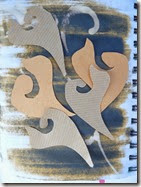
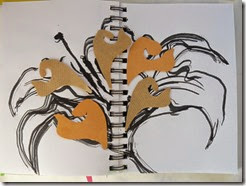
Use the negative shapes as well if you can find a good place. Incorporate a shape or shapes into a different drawing of the same object even though that shape doesn't appear there; it will still seem to ‘belong’.
Glue your shapes firmly in place so that they hold still and any further drawing/scribbling’ doesn’t curl back corners.
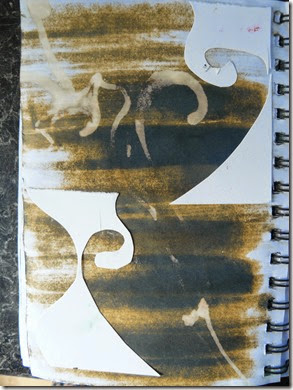
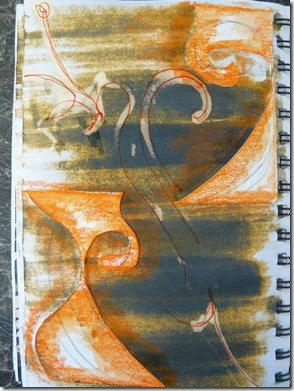
The shapes above right were crayoned over the edges to blend them into the drawing below and the shapes below were blended in with crayon plus lines of felt pen. You can see the detail of these lines on the white shape in the close-up image below them.
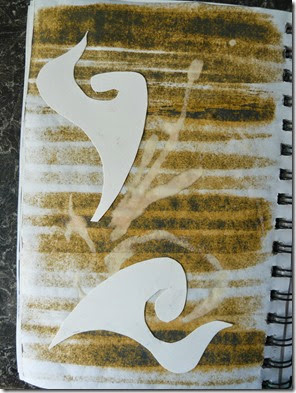
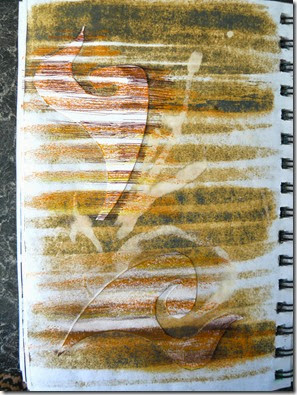
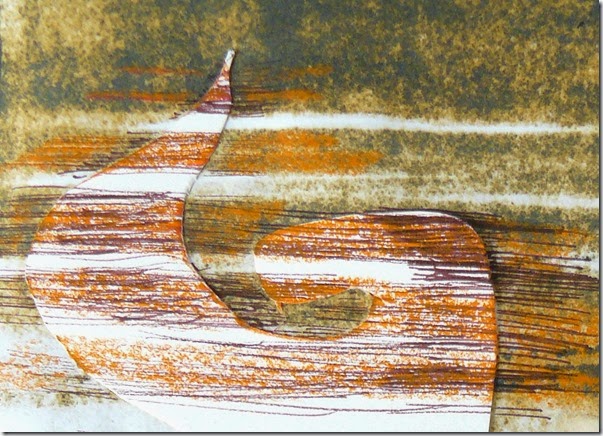
Above - close-up detail of crayon and pen lines.
The shapes of the water lily leaves were blended in with continuous swirling lines that relate to the shapes of the water lilies and the water surface between them. Note that having ‘learnt my lines’ from the drawings I did last week, I was confident that the lies I would add would echo those of the same character of the leaves.
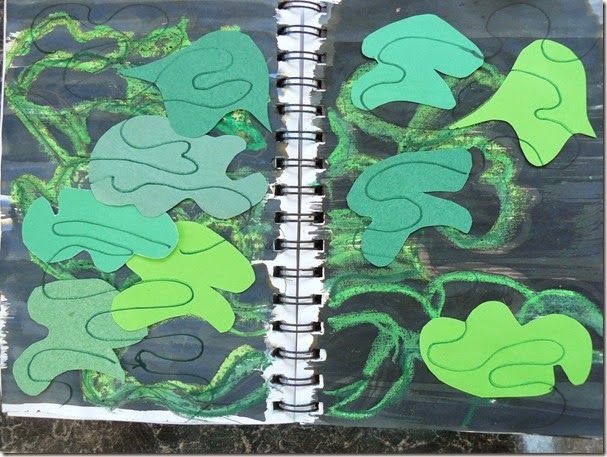
You don’t have to return your cut shapes onto your original drawing, you can make compositions onto fresh sketchbook pages and then add further drawing marks to them to make them more interesting. These added marks should be sympathetic to the character of the shapes themselves or to the character of their surroundings such as the water ripples in the case of the water lilies.
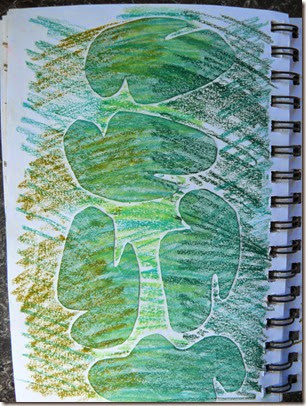
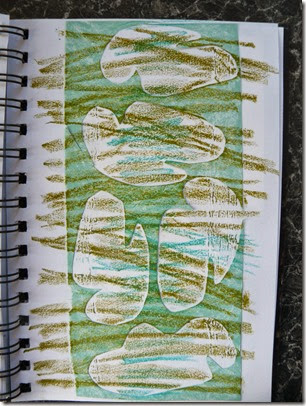
It’s fun to work out different compositions and to discover ways in which your shapes could be placed or even slotted together. Lines that reflect the curved edges of these shapes and of the curved edges of the leaves themselves have been added to this composition, created in greens and pinks.

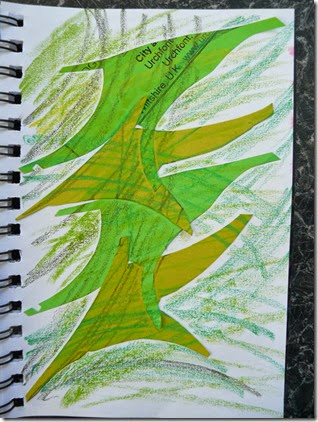
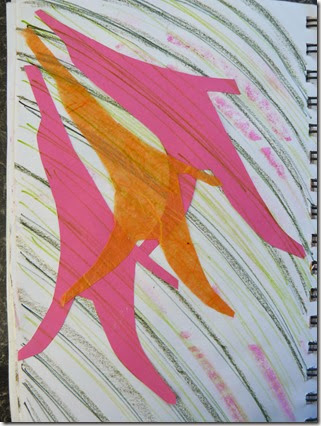
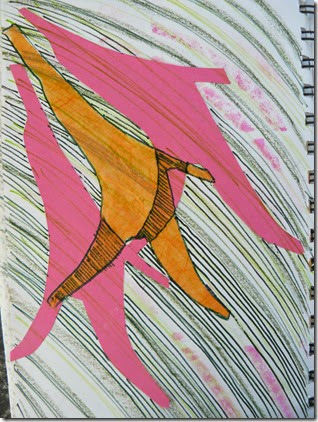
These very curvilinear shapes below have been drawn into with felt pens and pencils to exaggerate their character. The two drawings on the right below use the negative shapes with a possible addition of a couple of plain positive shapes (i wondered whether I have over-done the drawn lines and made it too ‘busy’). The plain shapes perhaps give a couple of peaceful islands for the eye to rest on. What do you think?
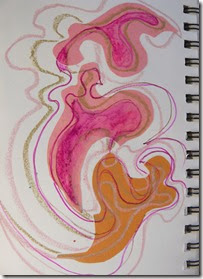
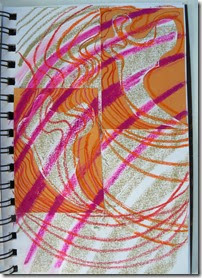
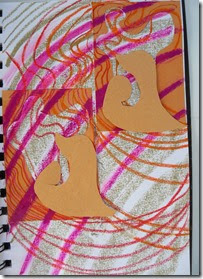
The final thought for this lesson is that you can draw into plain white applied shapes onto fresh sketchbook pages. Rubbing a soft pencil, crayon or charcoal around the cut edges and smudging them inwards makes quite a rounded 3D sort of effect. Scribbling in one direction also emphasises the edges and therefore the shapes in an interesting way.
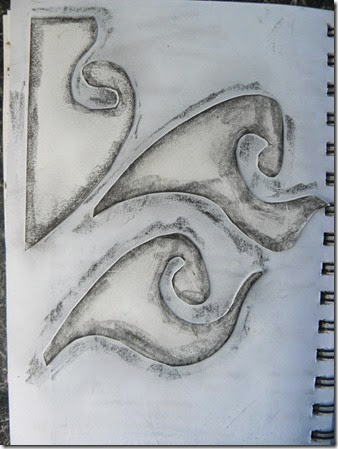
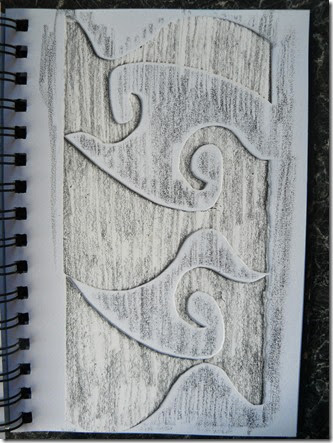
I hope you enjoy cutting shapes instead of drawing them this week.
Next weeks lesson will be on Tuesday 29th July and will be based on drawing moving shapes – I’m going to the Commonwealth games next weekend so will be seeing lots of action!.
